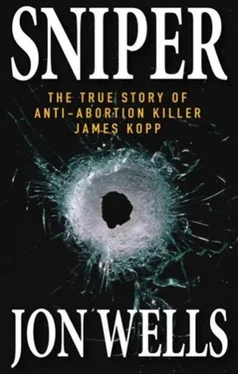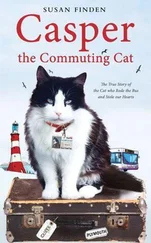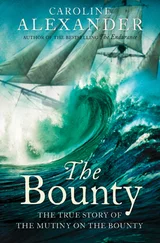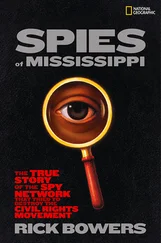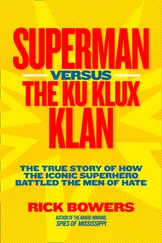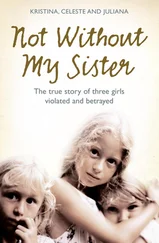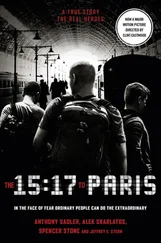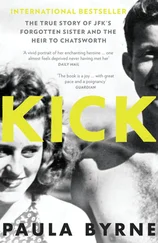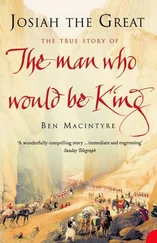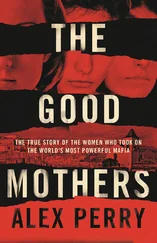“What made you so certain [Slepian] wouldn’t be killed when you used a high-powered rifle?” Arcara asked.
“There’s never 100 percent certainty. But I knew for certain he’d kill 25 children the next day.” In his final words in court, off the cuff, Kopp showed that he was taking the long view on matters. “Judge, you may have a plan for me for 25 or 30 years, but Jesus has a plan for me for the next 30 billion years. I’ll go with door number two.”
By the end of the afternoon Arcara made his ruling. James Charles Kopp would receive the maximum sentence, life without any chance of parole. And he was rejecting Kopp’s request that he be kept in a federal facility on the west coast. He would be housed wherever federal officials decided he should go. His possessions, such as they were, would be officially confiscated, Arcara added, including his tool box, the Euros found in his pocket in Dinan, and the infamous black Cavalier. It was the end of the line—almost, anyway.
In the courtroom gallery sat an Ontario Provincial Police detective taking notes. Canadian officicals still wanted to talk with Kopp in prison, try and get a statement from him.There was red tape to navigate, they needed to go through American justice channels, and if successul, inform families of the victims in Vancouver, Wininpeg, Ancaster what was going to happen. Perhaps, now that he was put away for life, Kopp would finally admit to what even his own lawyer had implied—that he was the Canadian sniper. He would almost certainly never be brought to Canada for trial to face attempted murder, but a confession would, finally, close the book on the case.
Among those continuing to follow the Canadian angle with great interest was the Brooklyn informant, code name CS1. Today the man who betrayed Marra and Malvasi lives under the FBI’s protective umbrella, his identity erased, having been paid the $500,000 reward money offered by the U.S. Justice Department. Speaking to a journalist, he suggests calling him “Jack,” the name he used with FBI agents. (He thought of the name when he secretly met with an agent early on in the case and spotted a bottle of Jack Daniel’s at the bar.) He keeps his whereabouts a secret, but allows that it’s warm where he lives, and he has a nice view of the ocean. Jack wonders if there might be a book deal in the offing, perhaps a movie about his life. He felt he had been instrumental in catching Kopp, wouldn’t his story be a fascinating one to tell?
Anyway, there was still the matter of the $547,000 in Canadian reward money. Jack called Canadian law enforcement officials asking about their progress getting an audience with Kopp, about closing the case. At times Jack has felt impatient, but is convinced it’s not a matter of “if, but when”, he gets paid again—and with the favorable Canadian–U.S. exchange on the dollar, he reflected, he stands to earn more now than if he had been paid when Kopp was first arrested. If it happens, no doubt he will be paid in cash, just as he was by the FBI. “How else do you pay someone who doesn’t exist?”
As for Jim Kopp, was there any doubt he would appeal the federal sentence, try to get another day in court? He was a lawyer’s son. He was cuffed, escorted out of the courtroom in his orange jumpsuit. He looked in the gallery on the way out. Several friends on the right side waved and smiled, the priest made a sign of the cross. Loretta made her way sideways along the back bench, as though negotiating her way along an empty church pew, to where they could see each other through a bulletproof glass partition near the prisoner’s exit.
“God bless you, Jim. Good work,” Loretta mouthed silently. Then she made a “call me” motion with her hand, and Jim smiled broadly just before he was led out and the door shut.
Heat: A Firefighter’s Story (James Lorimer & Company)
Copyright © 2008 by Jon Wells
All rights reserved. No part of this work covered by the copyright herein may be reproduced or used in any form or by any means—graphic, electronic or mechanical without the prior written permission of the publisher. Any request for photocopying, recording, taping or information storage and retrieval systems of any part of this book shall be directed in writing to The Canadian Copyright Licensing Agency (Access Copyright). For an Access Copyright license, visit www.accesscopyright.caor call toll free 1-800-893-5777.
Care has been taken to trace ownership of copyright material contained in this book. The publisher will gladly receive any information that will enable them to rectify any reference or credit line in subsequent editions.
Sniper was first published in serial form in 2004 in The Hamilton Spectator .
Library and Archives Canada Cataloguing in Publication Data
Wells, Jon
Sniper: the true story of anti-abortion killer James Kopp / Jon Wells.
ISBN 978-0-470-15546-2
1. Kopp, James, 1954– 2. Slepian, Barnett, 1946-1998. 3. Murder—New York (State)—Amherst. 4. Abortion—United States. 5. Pro-life movement—United States. 6. Murderers—United States—Biography. I. Title.
HV6248.K66W44 2008 364.152’3092 C2008-900604-6
Production Credits
Cover design: Ian Koo
Interior text design: Mike Chan
Typesetting: Mike Chan and Tegan Wallace Cover Photo: Don Farrall/Photodisc/Getty Images Printer: Quebecor World-Fairfield
John Wiley & Sons Canada, Ltd. 6045 Freemont Blvd.
Mississauga, Ontario
L5R 4J3
Printed in the United States
1 2 3 4 5 QW 12 11 10 09 08
